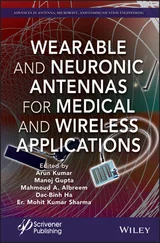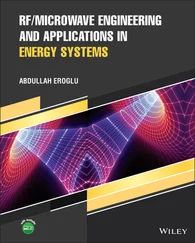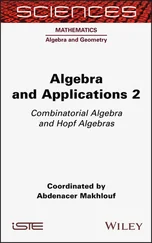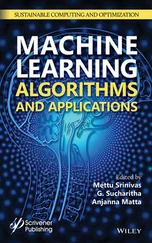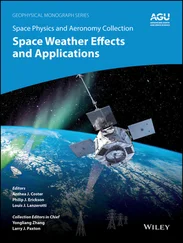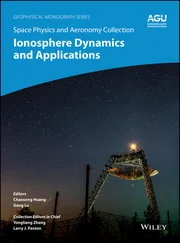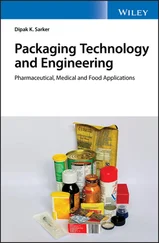1 Cover
2 List of Contributors
3 Preface
4 Abbreviations
5 1 Introduction 1.1 Background 1.2 The Idea 1.3 Exploring the Idea 1.4 Developing the Idea into a Mainstream Technology 1.5 Concluding Remarks Acknowledgements References
6 2 Antennas 2.1 Introduction 2.2 Basic Antennas 2.3 Unusual Antennas 2.4 Microstrip Patch Antennas 2.5 Microstrip Grid Array Antennas 2.6 Yagi‐Uda Antennas 2.7 Magneto‐Electric Dipole Antennas 2.8 Performance Improvement Techniques 2.9 Summary Acknowledgements References
7 3 Packaging Technologies 3.1 Introduction 3.2 Major Packaging Milestones 3.3 Packaging Taxonomy 3.4 Packaging Process for Several Major Packages 3.5 Summary and Emerging Trends References
8 4 Electrical, Mechanical, and Thermal Co‐Design 4.1 Introduction 4.2 Electrical, Warpage, and Thermomechanical Analysis for AiP Co‐design 4.3 Thermal Management Considerations for Next‐generation Heterogeneous Integrated Systems Acknowledgment References
9 5 Antenna‐in‐Package Measurements 5.1 General Introduction and Antenna Parameters 5.2 Impedance Measurements 5.3 Anechoic Measurement Facility for Characterizing AiPs 5.4 Over‐the‐air System‐level Testing 5.5 Summary and Conclusions References Note
10 6 Antenna‐in‐package Designs in Multilayered Low‐temperature Co‐fired Ceramic Platforms 6.1 Introduction 6.2 LTCC Technology 6.3 LTCC‐based AiP 6.4 Challenges and Upcoming Trends in LTCC AiP References
11 7 Antenna Integration in Packaging Technology operating from 60 GHz up to 300 GHz (HDI‐based AiP) 7.1 Organic Packaging Technology for AiP 7.2 Integration of AiP in Organic Packaging Technology Below 100 GHz 7.3 Integration of AiP in Organic Packaging Technology in the 120–140‐GHz Band 7.4 Integration of AiP in Organic Packaging Technology Beyond 200 GHz 7.5 Conclusion and Perspectives References
12 8 Antenna Integration in eWLB Package 8.1 Introduction 8.2 The Embedded Wafer Level BGA Package 8.3 Toolbox Elements for AiP in eWLB 8.4 Antenna Integration in eWLB 8.5 Application Examples 8.6 Conclusion Acknowledgement References NOTE
13 9 Additive Manufacturing AiP Designs and Applications 9.1 Introduction 9.2 Additive Manufacturing Technologies 9.3 Material Characterization 9.4 Recent Advances in AM for Packaging 9.5 Fabrication Process 9.6 AiP and SoP using AM Technologies 9.7 Summary and Prospect References
14 10 SLC‐based AiP for Phased Array Applications 10.1 Introduction 10.2 SLC Technology 10.3 AiP for 5G Base Station Applications 10.4 94‐GHz Scalable AiP Phased‐array Applications Acknowledgment References
15 11 3D AiP for Power Transfer, Sensor Nodes, and IoT Applications 11.1 Introduction 11.2 Small Antenna Design and Miniaturization Techniques 11.3 Multi‐mode Capability: A Way to Achieve Wideband Antennas 11.4 Miniaturized Antenna Solutions for Power Transfer and Energy Harvesting Applications 11.5 AiP Solutions in Low‐cost PCB Technology References
16 Index
17 End User License Agreement
1 Chapter 2Table 2.1 Dimensions of magneto‐electric dipole antennas.Table 2.2 Measured gain of magneto‐electric dipole antennas.
2 Chapter 4Table 4.1 Co‐design considerations of implementing a multilayer organic AiP M...Table 4.2 Peak chip power density of reported silicon‐based mmWave phased arr...Table 4.3 Thermal simulation specifications for the AiP prototype.Table 4.4 Temperature measurement of one active chip for thermal characteriza...
3 Chapter 5Table 5.1 Motor movements during various types of antenna measurements.Table 5.2 Antenna design requirements of the circularly polarized rod antenna...Table 5.3 Measurement methods to determine antenna polarization characteristi...Table 5.4 Uncertainty caused by the motor movements and positioning of the AU...
4 Chapter 6Table 6.1 Characteristics of LTCC material systems.Table 6.2 Worldwide LTCC foundries.
5 Chapter 7Table 7.1 Examples of industrial CCL materialTable 7.2 Examples of industrial RCC material provided by Ajinomoto (https://...Table 7.3 Current PTH and μvia diameters supported in the packaging ...Table 7.4 Design rules for SUB, SAP, mSAP and ETS processesTable 7.5 Number of parts per strip in function of substrate body sizeTable 7.6 Antenna final dimensions
6 Chapter 8Table 8.1 Parameters of transmission lines realizable in the eWLB for line/sp...Table 8.2 Layout parameters and measured performance of the single‐layer spir...Table 8.3 Wavelengths at selected frequencies for  and the corresponding maxi...
and the corresponding maxi...
7 Chapter 9Table 9.1 Physical dimensions of the broadband AiP design.
8 Chapter 10Table 10.1 State‐of‐the‐art phased‐array survey.Table 10.2 Measured antenna performance comparison.
9 Chapter 11Table 11.1 Desired antenna features in scavenging and transmitting mode
1 Chapter 1 Figure 1.1 Micrograph of the first 2.4‐GHz CMOS wireless SoC, a Bluetooth radi... Figure 1.2 Photographs of the first 60‐GHz SiGe radio chipset: (a) transmitter... Figure 1.3 Photograph of a microchip. Figure 1.4 Photographs showing the evolution of the integration of antenna in ... Figure 1.5 Photograph of IBM chip‐scale package with integrated chips and ante... Figure 1.6 Captured images and photographs of AiP for IBM 60‐GHz SiGe chip set...
2 Chapter 2 Figure 2.1 Structure of a basic patch antenna and coordinate system. Figure 2.2 Structure of a stacked patch antenna and coordinate system. Figure 2.3 Photograph of a stacked patch antenna. Figure 2.4 Simulated and measured | S 11| of a stacked patch antenna. Figure 2.5 Simulated and measured gain of a stacked patch antenna. Figure 2.6 Photograph of a linearly polarized 2×4 patch antenna arr... Figure 2.7 Photograph of a circularly polarized 4×4 patch antenna a... Figure 2.8 Photograph of a switched‐beam patch antenna array (from... Figure 2.9 Photograph of a phased array (from [11], © 2011 IEEE, re... Figure 2.10 Structure of a microstrip grid array antenna and coordinate ... Figure 2.11 Photograph of a dual‐feed microstrip grid array antenna. Figure 2.12 Simulated and measured results (a) | S d11... Figure 2.13 Simulated and measured radiation patterns of a dual‐fe... Figure 2.14 Simulated and measured radiation patterns of a dual‐fe... Figure 2.15 Simulated and measured gain values of a dual‐feed micr... Figure 2.16 Simulated current distributions of a dual‐feed microst... Figure 2.17 Structure of a horizontal Yagi‐Uda antenna and coordin... Figure 2.18 Structure of a vertical Yagi‐Uda antenna and coordinat... Figure 2.19 Simulated and measured | S 11| of a vertical... Figure 2.20 Simulated and measured radiation patterns of a vertical Yagi...Figure 2.21 Structure of a single‐polarized magneto‐electric...Figure 2.22 Photograph of a single‐polarized magneto‐electri...Figure 2.23 Structure of a dual‐polarized magneto‐electric d...Figure 2.24 Photograph of a dual‐polarized magneto‐electric ...Figure 2.25 Simulated and measured | S 11| results for (a)...Figure 2.26 Simulated and measured radiation patterns of a single‐po...Figure 2.27 Simulated and measured radiation patterns of a dual‐pola...
3 Chapter 3Figure 3.1 Lead frame.Figure 3.2 Laminate substrate: (a) cross‐section view of laminate substrate a...Figure 3.3 Simplified RDL process flow: (a) incoming wafer, (b) spin coat and...Figure 3.4 Wire bond versus flip chip die: (a) wire bond die and (b) flip chip...Figure 3.5 Wire bond plastic BGA package: (a) top and bottom view, (b) isometr...Figure 3.6 Assembly process flow for wire bond plastic BGA.
Читать дальше
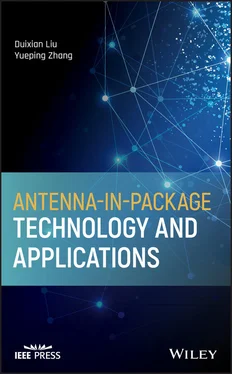
 and the corresponding maxi...
and the corresponding maxi...